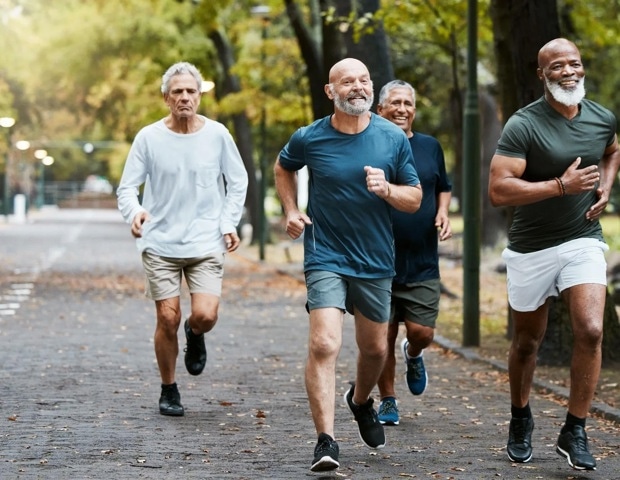Fitness amongst young adults strongly linked to socioeconomic development and gender equality – News-Medical

Report on the Correlation Between Societal Development, Gender Equality, and Physical Fitness
1.0 Introduction
A comprehensive study has established a direct correlation between the cardiorespiratory fitness (CRF) of young adults and key societal metrics, namely the Human Development Index (HDI) and the Gender Inequality Index (GII). The findings indicate that national levels of socioeconomic development and gender equality are significant determinants of public health outcomes. This report analyzes these findings with a specific focus on their implications for achieving the United Nations Sustainable Development Goals (SDGs).
2.0 Methodology
The analysis is based on a systematic review of existing research, encompassing:
- 95 individual studies
- Data from 24 countries
- A total of over 119,000 adult participants
The primary metric for physical fitness was CRF, measured as VO2peak (the maximum oxygen uptake during physical exertion). This was correlated against national scores for HDI, which measures education, income, and life expectancy, and GII, which reflects gender-based disparities in health, education, and labor.
3.0 Key Findings and Alignment with Sustainable Development Goals (SDGs)
The results demonstrate that societal structures profoundly impact physical health, directly aligning with several key SDGs. The primary findings are detailed below in the context of their relevant goals.
3.1 SDG 3: Good Health and Well-being
The study underscores the importance of societal conditions in promoting physical health, a cornerstone of SDG 3. High CRF is a critical factor for longevity and well-being.
- There is a clear positive correlation between a country’s HDI and the average CRF of its population.
- This suggests that investments in education, economic stability, and healthcare infrastructure, which contribute to a higher HDI, also foster environments conducive to better physical fitness and overall public health.
3.2 SDG 5: Gender Equality
The research provides compelling evidence that advancing gender equality is a direct pathway to improving health outcomes, particularly for women.
- Higher gender equality (a lower GII score) correlates strongly with higher CRF in both women and men.
- The impact is most significant for young women. In countries with high gender equality, women’s average VO2peak was 6.5 mL/kg/min higher than that of their peers in countries with low gender equality.
- This highlights that removing gender-related barriers to physical activity is a critical intervention for achieving both SDG 5 and SDG 3.
3.3 SDG 10: Reduced Inequalities
The findings illustrate how socioeconomic inequality manifests as health disparities, reinforcing the objectives of SDG 10.
- A significant fitness gap exists between nations at different development levels. Young women in medium-HDI countries had a demonstrably higher VO2peak (31.2 mL/kg/min) than those in low-HDI countries (28.5 mL/kg/min).
- This correlation between development status and physical health indicates that reducing global inequalities is essential for achieving health equity.
4.0 Conclusion
The evidence strongly suggests that cardiorespiratory fitness is not merely an individual attribute but is heavily influenced by national socioeconomic and gender equality frameworks. Progress towards achieving SDG 5 (Gender Equality) and SDG 10 (Reduced Inequalities) is intrinsically linked to the advancement of SDG 3 (Good Health and Well-being). Therefore, societal interventions and policies aimed at reducing social and gender-based hindrances to physical exercise are crucial for improving global public health and meeting sustainable development targets.
Analysis of SDGs, Targets, and Indicators
1. Which SDGs are addressed or connected to the issues highlighted in the article?
-
SDG 3: Good Health and Well-being
The article’s central theme is cardiorespiratory fitness (CRF), which it describes as “an important factor of health and life-expectancy.” The entire study revolves around measuring and understanding the factors that influence physical health, directly aligning with the goal of ensuring healthy lives and promoting well-being.
-
SDG 5: Gender Equality
The study explicitly finds that fitness is “strongly associated with… gender equality.” It uses the Gender Inequality Index (GII) as a key metric and reports that higher gender equality correlates with higher fitness levels, particularly for young women. The article highlights the need to reduce “gender-related hindrances to physical exercise,” connecting directly to the goal of achieving gender equality.
-
SDG 10: Reduced Inequalities
The article analyzes disparities in fitness levels between countries with different levels of socioeconomic development, using the Human Development Index (HDI). It shows that “people in countries with a higher HDI were, on average, fitter.” This addresses inequality among countries. Furthermore, by examining gender-based differences in fitness, it also touches upon inequalities within countries.
2. What specific targets under those SDGs can be identified based on the article’s content?
-
SDG 3: Good Health and Well-being
- Target 3.4: By 2030, reduce by one-third premature mortality from non-communicable diseases through prevention and treatment and promote mental health and well-being. The article’s focus on cardiorespiratory fitness (CRF) is directly related to the prevention of non-communicable diseases, as high CRF is a key factor in reducing the risk of such conditions and improving overall life expectancy.
-
SDG 5: Gender Equality
- Target 5.1: End all forms of discrimination against all women and girls everywhere. The article suggests that “societal structures” and “gender-related hindrances” impact women’s access to exercise. These hindrances can be considered a form of discrimination that affects women’s health outcomes, which this target aims to eliminate.
-
SDG 10: Reduced Inequalities
- Target 10.2: By 2030, empower and promote the social, economic and political inclusion of all, irrespective of age, sex, disability, race, ethnicity, origin, religion or economic or other status. The article’s conclusion calls for “societal interventions and guidelines that reduce social and gender-related hindrances to physical exercise.” This aligns with promoting social inclusion by ensuring all individuals, regardless of gender or socioeconomic background, have equal access to opportunities for physical health.
3. Are there any indicators mentioned or implied in the article that can be used to measure progress towards the identified targets?
Yes, the article explicitly mentions several composite and specific indicators used in the study, which can be used to measure progress:
- Cardiorespiratory Fitness (CRF), measured by VO2peak: The article identifies CRF, measured as “the highest oxygen uptake a body achieves during physical exertion (VO2peak),” as the primary health outcome. This serves as a direct indicator of physical health and well-being, relevant to SDG 3. The study shows how VO2peak levels vary, such as young women in medium HDI countries having a higher VO2peak than those in low HDI countries (31.2 vs. 28.5 mL/kg/min).
- Human Development Index (HDI): The article uses the HDI as a key measure of socioeconomic development, noting it includes “parameters like education, income and life-expectancy.” By correlating HDI with fitness levels, it is used as an indicator to measure inequality between countries (SDG 10).
- Gender Inequality Index (GII): The GII is explicitly used to measure gender equality, reflecting “differences between women and men in terms of health, education and labour.” The study’s finding that a lower GII correlates with higher fitness makes it a relevant indicator for tracking progress on SDG 5 in the context of health outcomes.
4. Create a table with three columns titled ‘SDGs, Targets and Indicators” to present the findings from analyzing the article.
| SDGs | Targets | Indicators |
|---|---|---|
| SDG 3: Good Health and Well-being | Target 3.4: Reduce premature mortality from non-communicable diseases through prevention and promote well-being. | Cardiorespiratory Fitness (CRF) as measured by VO2peak (highest oxygen uptake). |
| SDG 5: Gender Equality | Target 5.1: End all forms of discrimination against all women and girls everywhere. | Gender Inequality Index (GII), which reflects differences between women and men in health, education, and labor. |
| SDG 10: Reduced Inequalities | Target 10.2: Empower and promote the social, economic and political inclusion of all. | Human Development Index (HDI), which measures societal parameters like education, income, and life expectancy to compare development levels between countries. |
Source: news-medical.net
What is Your Reaction?
 Like
0
Like
0
 Dislike
0
Dislike
0
 Love
0
Love
0
 Funny
0
Funny
0
 Angry
0
Angry
0
 Sad
0
Sad
0
 Wow
0
Wow
0
















































/environment-climate-change-and-health-(ech)/water-sanitation-hygiene-and-health-(wsh)/landfill-tuvalu-36092.tmb-1200v.jpg?sfvrsn=5c21fe40_1#)

.jpg.webp?itok=0ZsAnae9#)


























